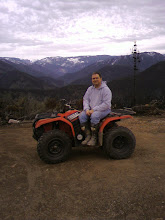I am a teacher, a professor to be exact. And this term I am teaching in two classrooms in Brennan Hall and one in Heafey Hall on the campus of Holy Names University—where I have worked for the last fourteen years. But this is the first year in which every room is equipped with a dry-erase (or “white”) board or two. I know some teachers will tell you how messy and disagreeable an old chalkboard could be, what with the dust and dirty erasers and broken pieces of chalk and of course the occasional spine and teeth-grinding scrape on the board. However, I would counter that white boards suck.
The biggest problem with dry-erase boards is that they don’t actually erase. To their credit (not really), white boards certainly blur, smear, and reduce whatever is written on them. So when I walk into a classroom and begin to write on the white board, I write over the traces of what was written in previous classes. Another English instructor noted that the boards look like a “palimpsest,” which was a kind of printing or writing going back to the middle ages where one document would be written over an earlier one. Maybe we just have lousy white boards at our school, but the solution so far has been to place a solution of cleaner in each room, or each floor, so that an instructor can take the time to spray the board and then wipe it down with a provided terry-cloth towel. Of course, if you don’t get the board completely dry, the lousy dry-erase pens won’t write worth beans.
This trying to get a clean board reminds me of my first semester of PhD work at SIU. I enrolled in a seminar with the department chair, Dr. Richard Peterson, on James Joyce’s Finnegans Wake (mistake). One day, early in the term, Dr. Peterson walked into the small classroom, and he looked at the chalkboard, which was completely covered by the writing of whoever taught the previous class in that room. Dr. Peterson, who was a small, usually quiet man (except when he played softball on Saturdays), slumped his shoulders a bit and shook his head in disgust. He erased the board with deliberate sweeps with the eraser, wiped his hands, and then looked up at us. He said something like this to us: “You are all teaching here now, and you’re going to make teaching your career. Don’t ever leave your board un-erased when you leave a room. It’s like telling someone else to clean up your garbage.” Seeing as how Dr. Peterson was both our instructor and boss, most of us paid attention to what he said.
Over the years, I’ve erased the chalk of many instructors who taught before me, and I never let the occasion pass without telling my students the Dr. Peterson story. I guess I’m like Dr. Peterson: I would like my students, whether or not they become teachers, to be courteous and conscientious people. Unfortunately, my fellow professors and I are rarely evaluated on common courtesy (or even real competence), either. Now, with the white boards, you can’t tell who is conscientious and who isn’t because the board looks about same if it has been erased or not.
I know there are such things as “smart boards” and LCD projectors and something evil called Powerpoint, but all I ever needed or asked for was a good pieces of chalk, an eraser, and clean board at the beginning of class.

Those smart boards are cool though!
ReplyDelete